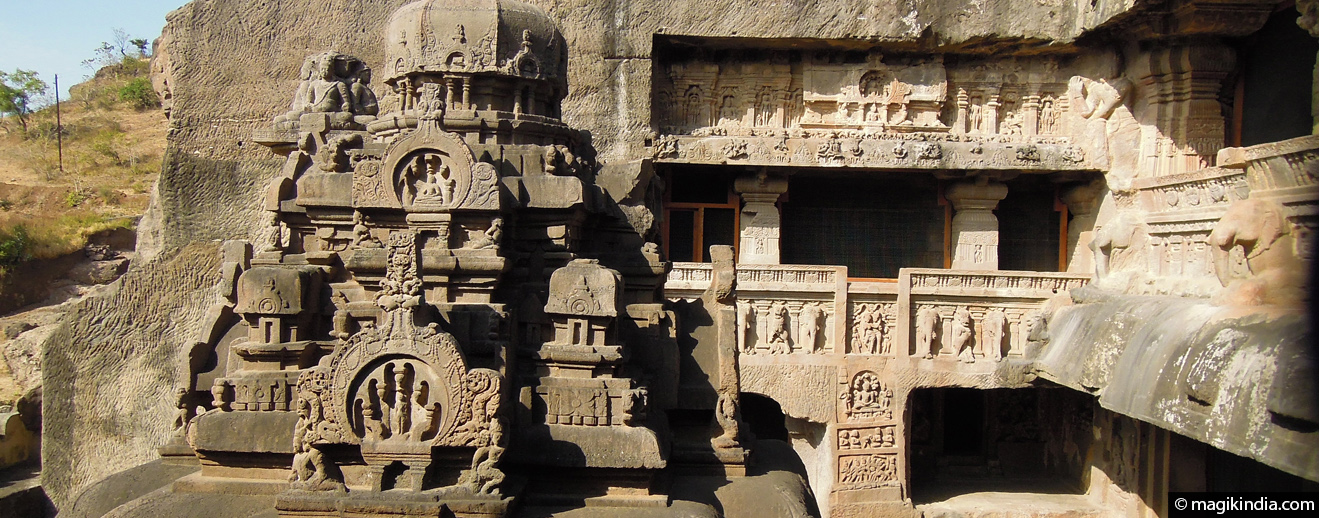
Ellora caves, the wonders of Maharashtra
![]() The Ellora caves will take your breath away. The technical brilliance and aesthetic beauty of this Unesco World Heritage site undeniably put the caves among the world’s finest rock-cut temples and make them a reference point for all Indian art.
The Ellora caves will take your breath away. The technical brilliance and aesthetic beauty of this Unesco World Heritage site undeniably put the caves among the world’s finest rock-cut temples and make them a reference point for all Indian art.
The 34 caves carved out of the rock along a 2km stretch of Charanandri Hill contain magnificent Hindu, Jain and Buddhist temples. They were made between the 5th and 10th centuries CE under the Kalachuri, Chalukya and Rashtrakuta dynasties and are evidence of the harmony and religious tolerance that prevailed in India in those days.
If I had to choose only one monument on the site of Ellora, it would undoubtedly be the temple of Kailasha (cave 16), started in the 7th century by King Krishna I of the Rashtrakuta dynasty. It is surely one of the most sophisticated monolithic architectures in the world.
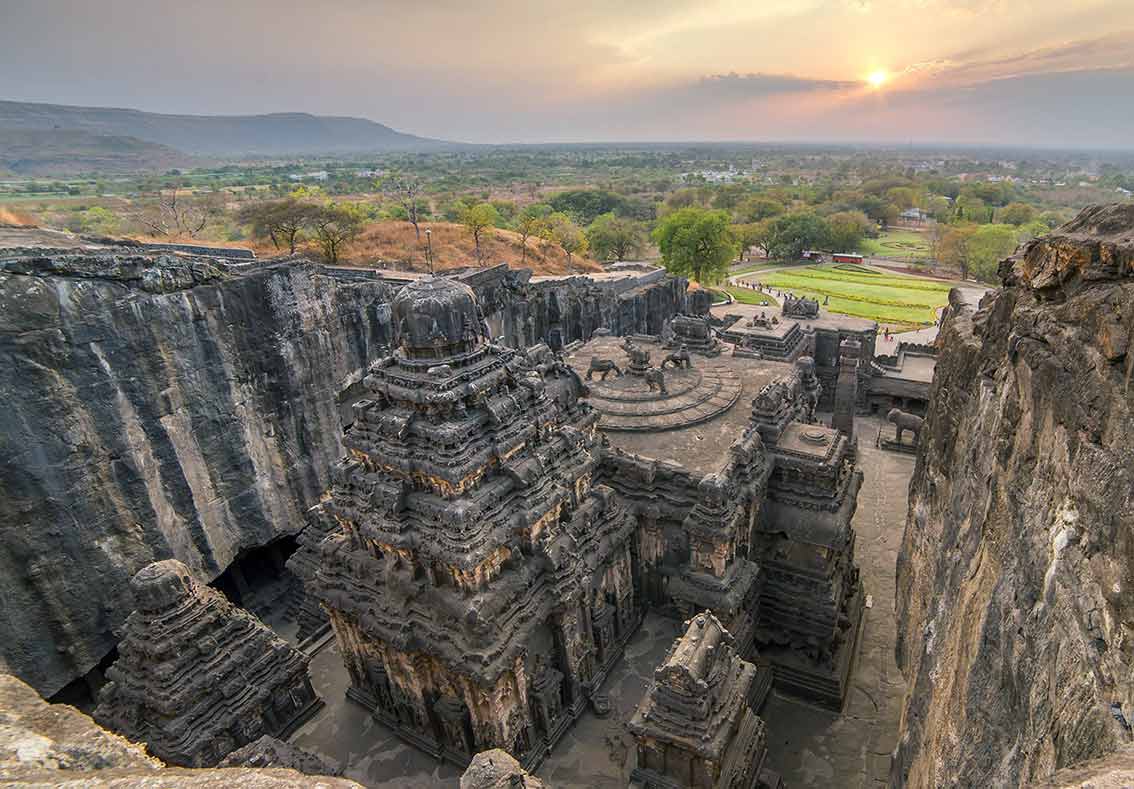
N.B.: Visitors heading for the Ellora and Ajanta caves generally stay in Aurangabad. Ellora is 30km from there. There are also small hotels on both sites.
Bouddhist caves (1-12)
The twelve Buddhist caves are located on the south side of the site. Eleven of them are viharas (monasteries) and only one, the most remarkable, is a Chaitya, a sanctuary (cave 10).
Caves 1, 2, 3, 4 are quite simple in architectural terms, but caves 5, 10 and 12 are much more interesting.
Cave 5
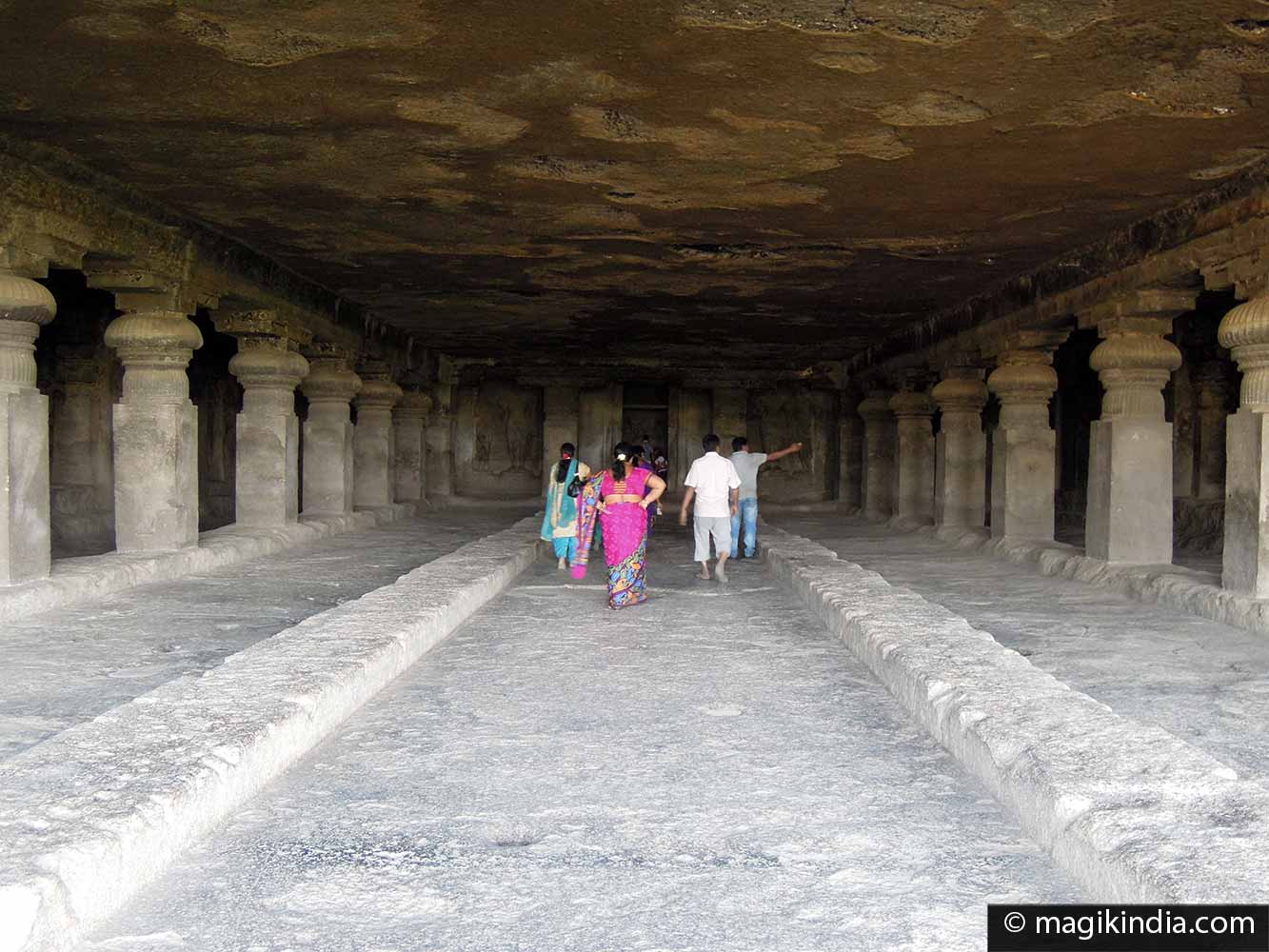
The Cave 5 dating from the 7th century AD is the largest vihara of the group. It is a long rectangular room 53 m long x 36 m wide, which includes 17 cells and two rows of 10 columns in front of which are placed in parallel two long stone benches leading to a statue of Buddha in Vyakhyana mudra (teaching). This cave, and Kanheri Cave 11 (in Mumbai), are the only two Buddhist caves in India arranged this way. The function of this cave remains a mystery, one thinks it was a refectory or a meeting room or where rituals were performed.
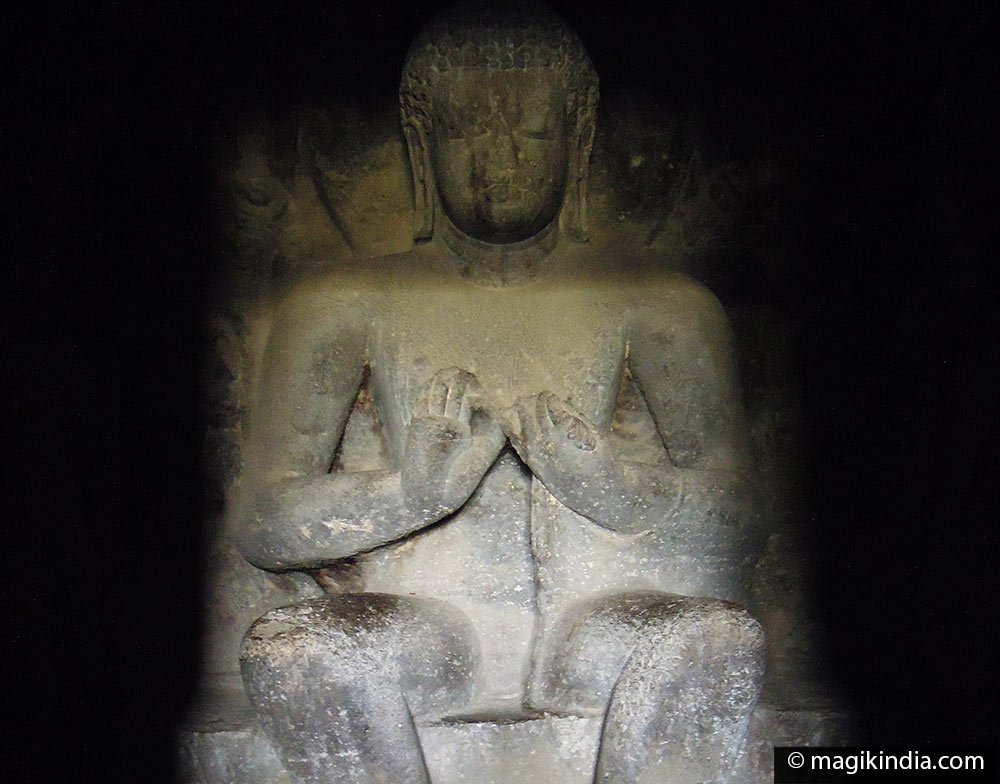
Cave 10, Vishvakarma cave or carpenter’s cave
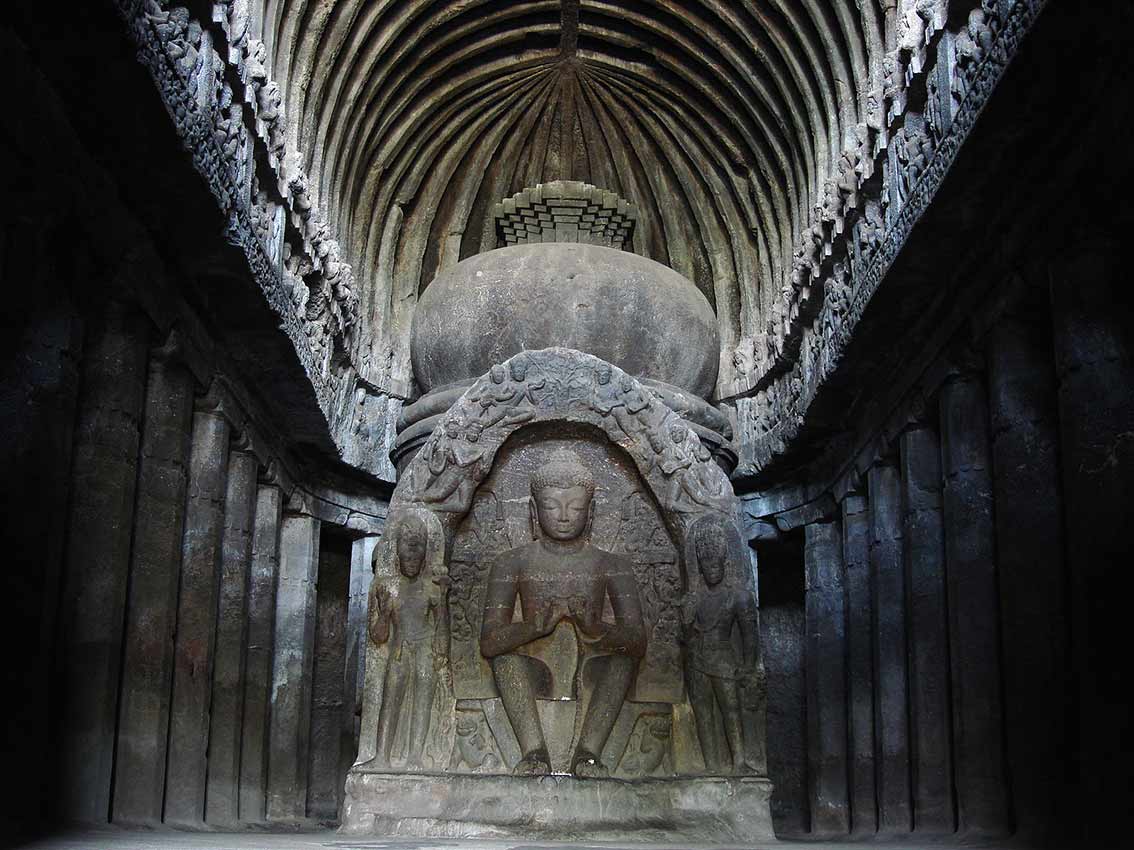
The Cave 10 (Vishvakarma) is the most remarkable among the Buddhist caves of the site. It is also known as the ‘carpenter’s cave’ because the sculptors copied the shapes of the archaic wooden buildings and the barrel-shaped ribbed vault resembles the hull of a ship. 28 octagonal columns lead us to the heart of the cave where there is a 4.5m Buddha statue seated in a teacher’s pose (mudra vyakhyana).
Cave 12, Thin Tal
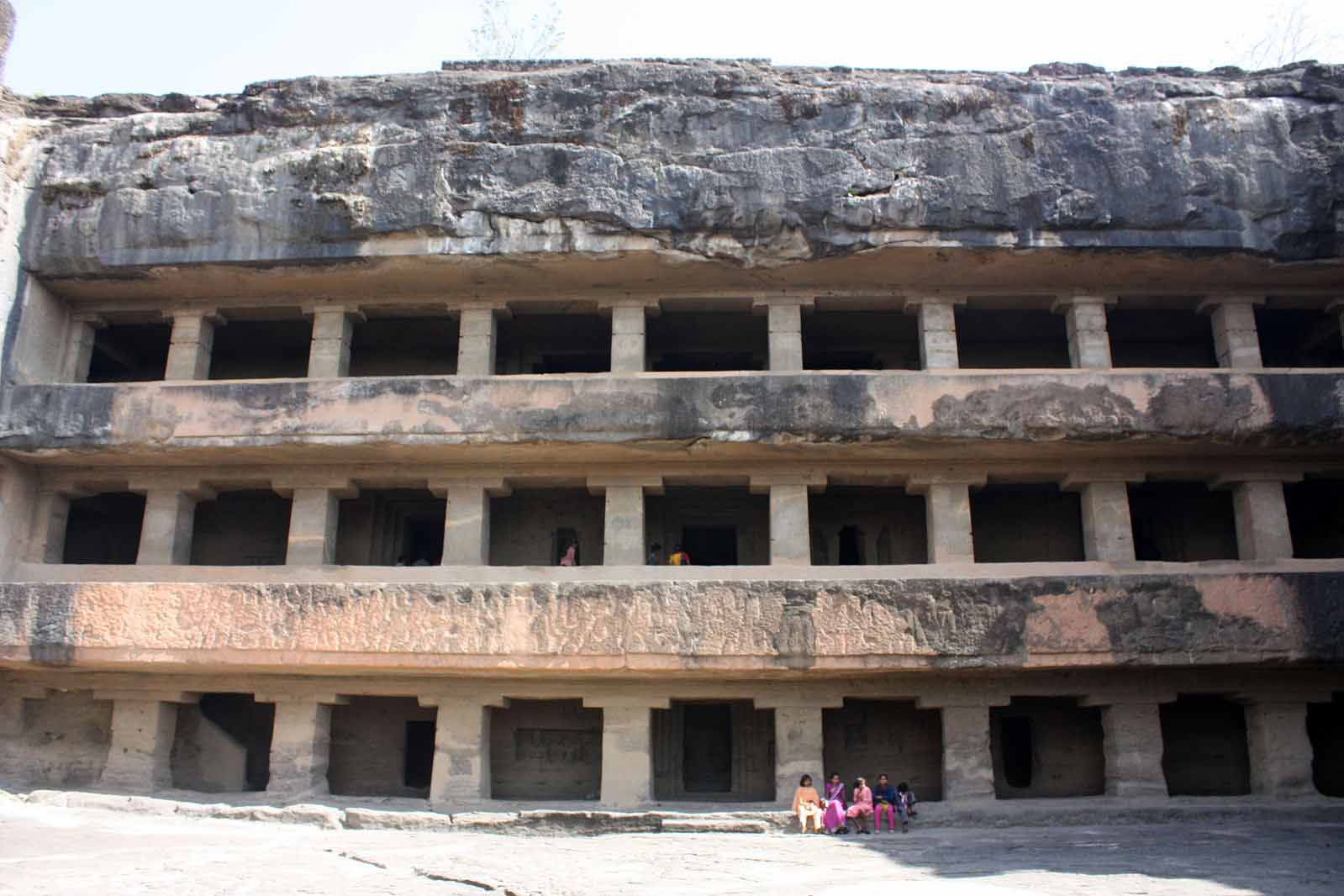
The Cave 12 or ‘Tin Thal’ is a huge three-story monastery of the ‘Mahayana’ branch, which contains an iconography belonging to Vajrayana Buddhism but also to Hinduism. The top floor is particularly worth a look, it houses a Buddha flanked by his seven previous incarnations.
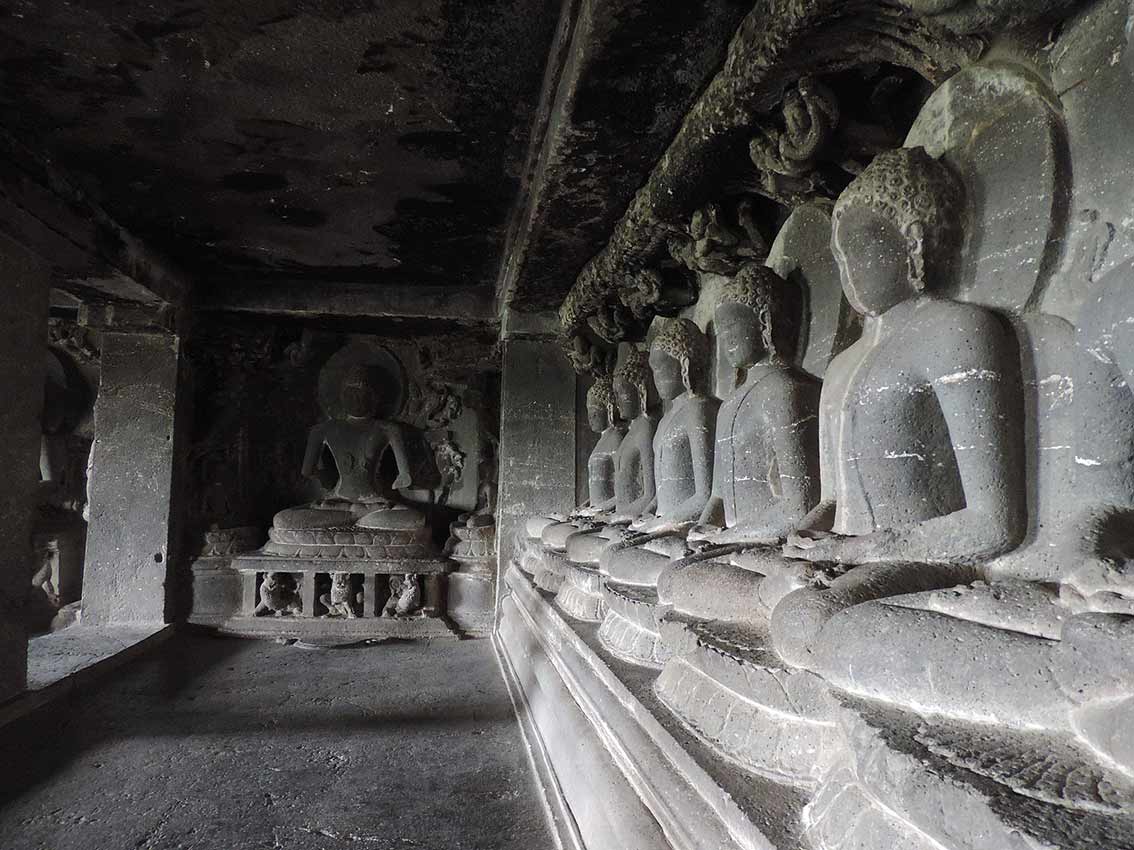
Hindu caves (13–29)
The Hindu caves were built during the Kalachuri period, from the middle of the 6th century to the end of the 13th century AD in two phases.
The construction of the first Hindu caves began before those of Buddhism or Jain. Cave 29, also called ‘Dhumar Lena’, is one of the first built and among the largest excavations in Ellora.
Here are the most significant Hindu caves of Ellora.
Cave 14, Ravana Ka Khai
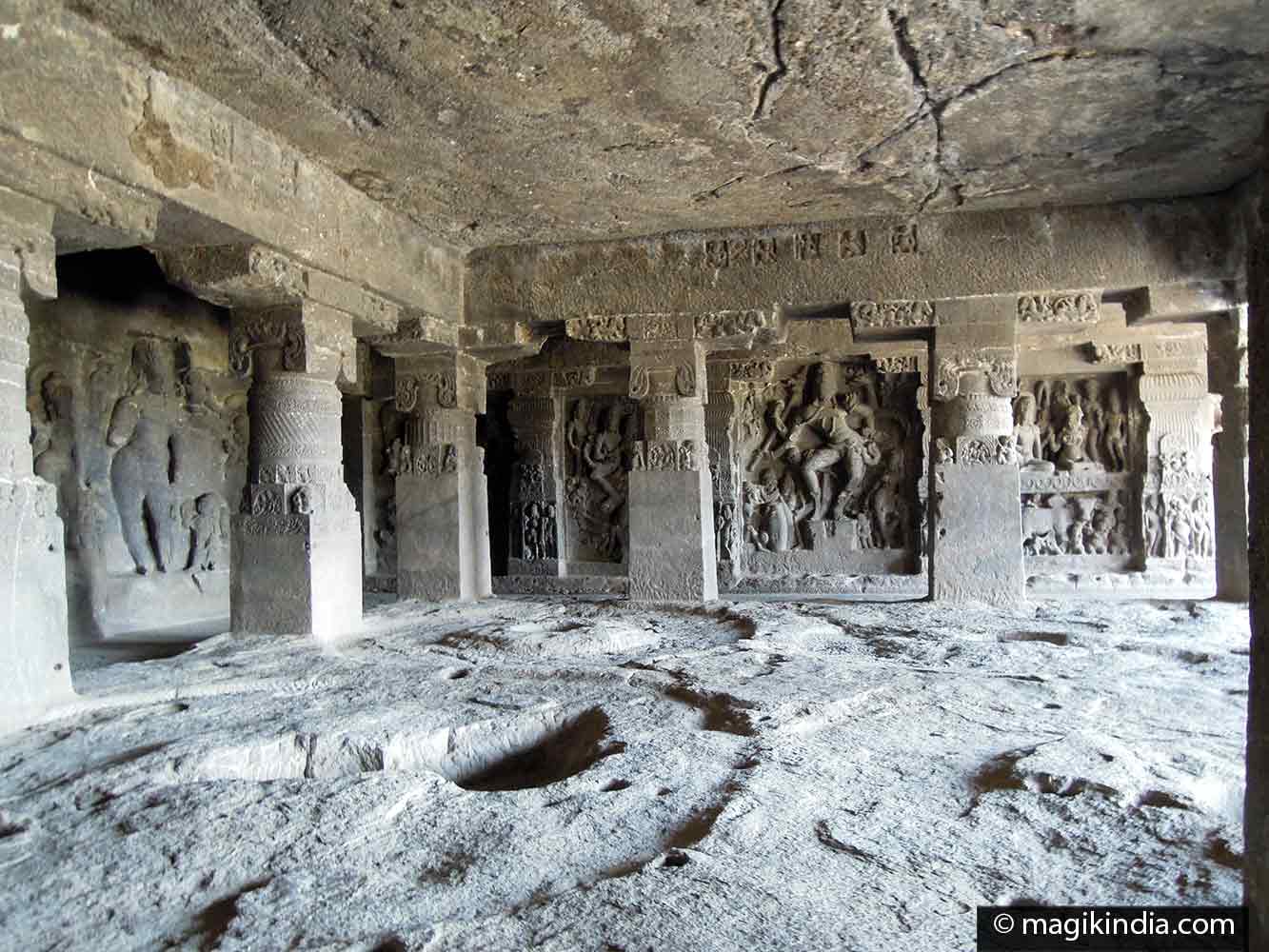
The Cave 14, also known as ‘Ravana Ka Khai’, ‘Ravana abode’, dates from the beginning of the 7th century AD. It was first of all a Buddhist monastery before being converted into a Hindu temple. This cave has a large hall with 16 pillars (mandapa) flanked by beautiful sculptural representations dedicated to the worship of Shiva as well as to the Vishnu faith.
Cave 15, Dhashavatara or cave of the ten avatars
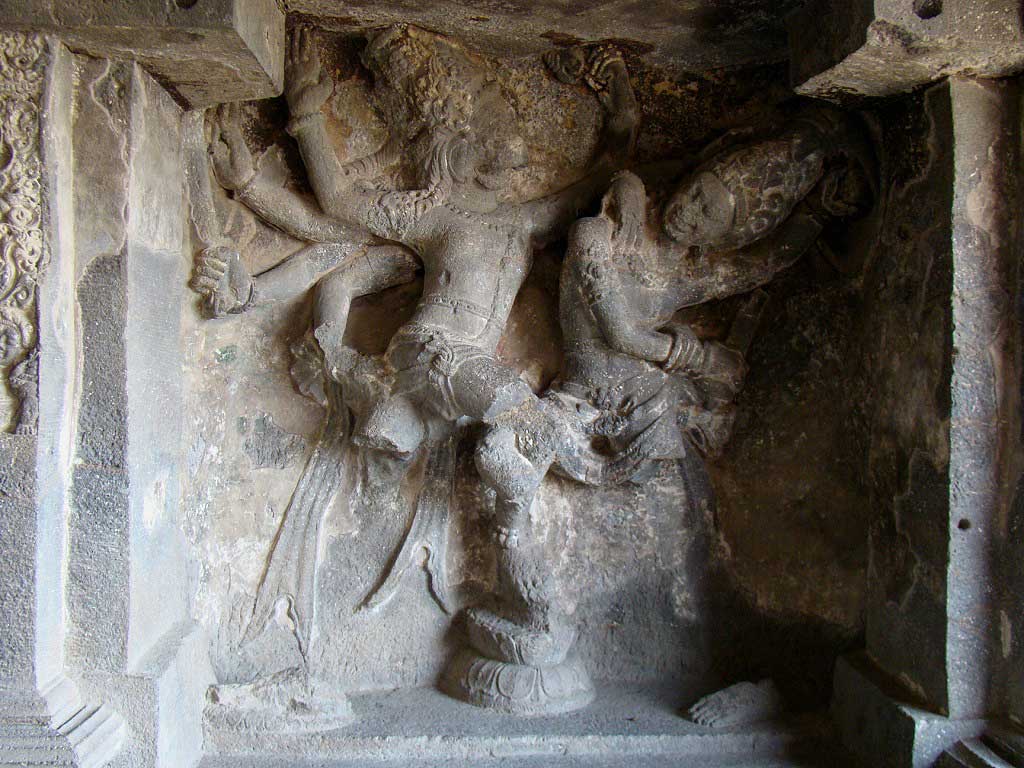
The Cave 15 is also called Dashavatara (cave of the ten avatars), because there are ten incarnations of lord Vishnu represented here. This cave-temple can go unnoticed, it is reached by a flight of steps. It would be a shame to miss this sanctuary, which houses beautiful bas reliefs illustrating a wide range of themes such as Vishnu in his form of lion-man (Narasimha) slaying Hiranyaksha, an Asura demon.
Cave 16, Kailasa temple
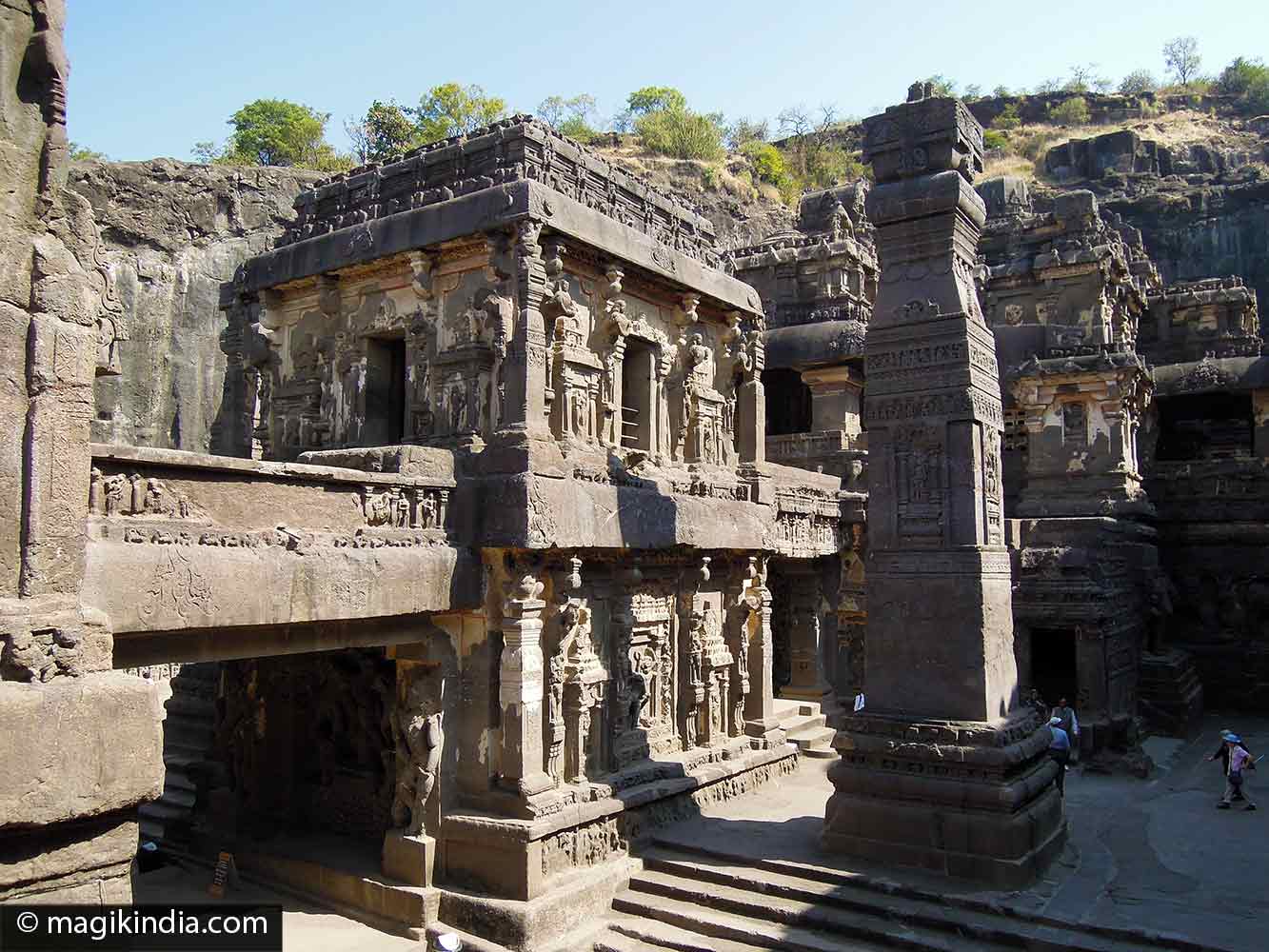
The Cave 16 (Kailasa temple) is Ellora’s most breathtaking monument, due to its size but also to its architectural prowess: the temple is entirely carved out of a single rock. It is dedicated to Shiva and it is drawn alike other Hindu temples with a garbha-grihya (sanctuary) where a lingam is carved in the same single rock. All around the temple, a large colonnaded space has been carved for the circumambulation and the basement of the temple presents many frescoes dedicated to the worship of Shiva, but also to Shakti and Vishnu; A notable set of sculptures includes the twelve episodes from Krishna’s childhood, an important element of the Vishnuism.
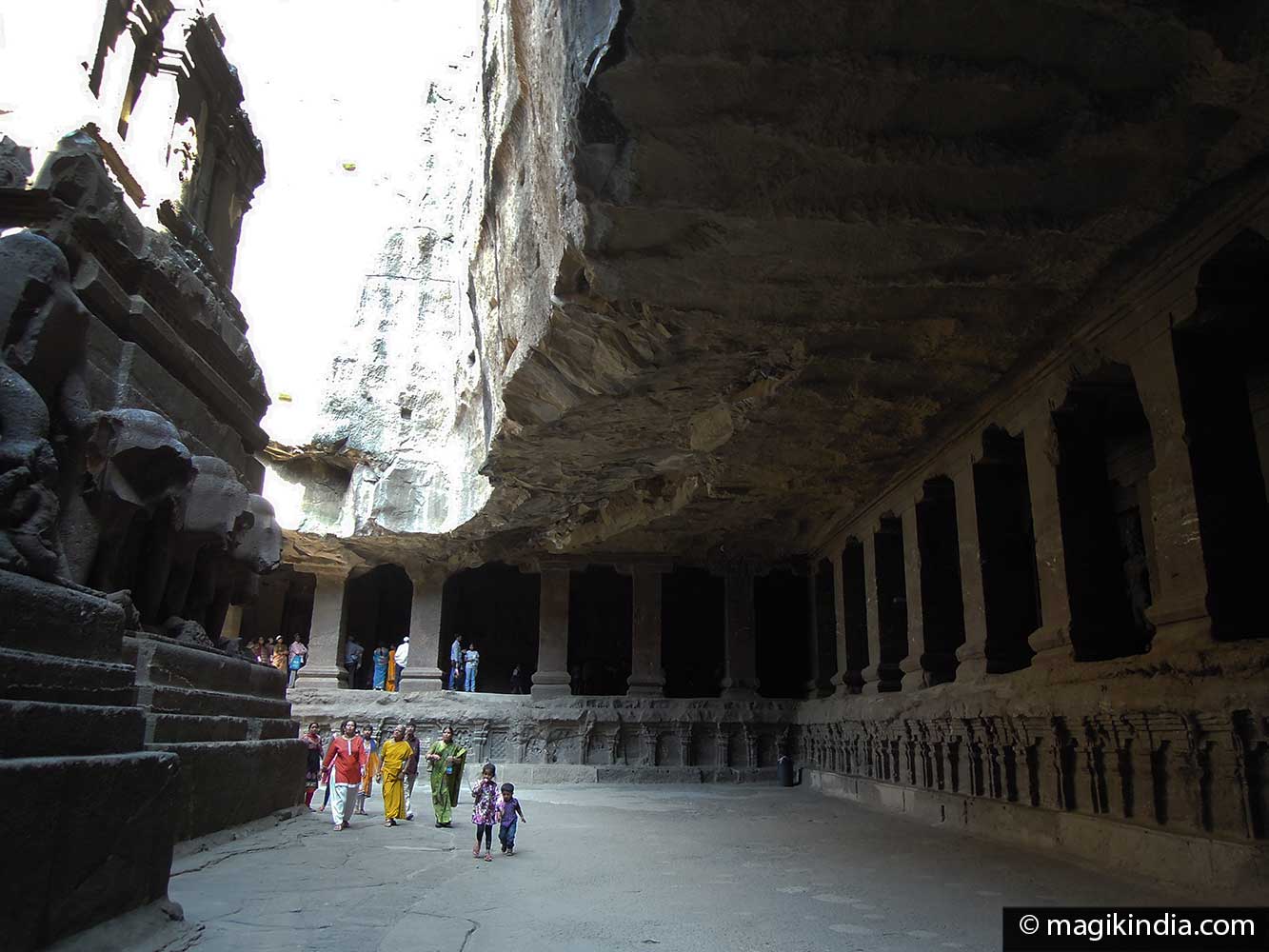
Cave 21, Rameshwar Lena
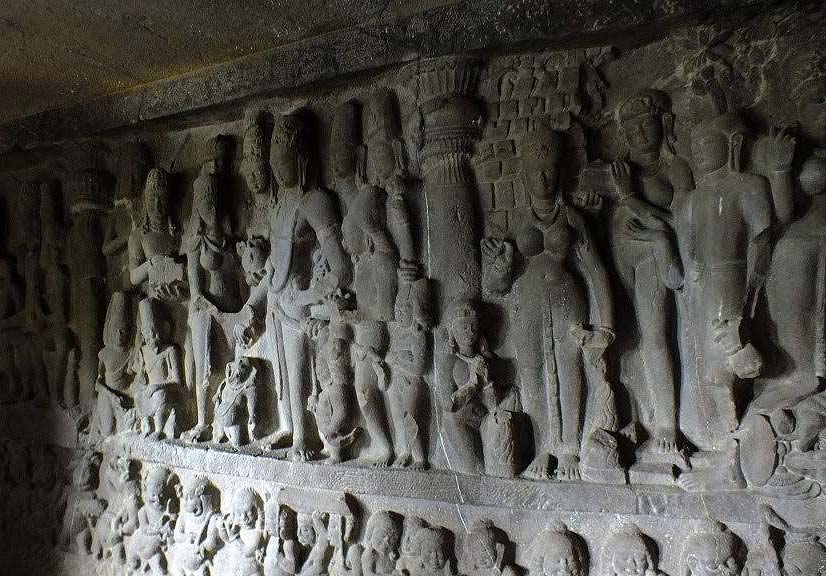
The Cave 21 (Rameshwar Lena) is also one of the first excavations on the Ellora site, the construction of which was attributed to the Kalachuri dynasty. Among the many bas-reliefs of the cave, there is a remarkable panel dedicated to the Sapta Matrika, the seven mother goddesses of the Shakti tradition. The entrance to the cave is flanked by large sculptures of the goddesses Ganga and Yamuna representing two of the seven sacred rivers of India.
Cave 29, Dumar Lena or Sita-ka-Nahani
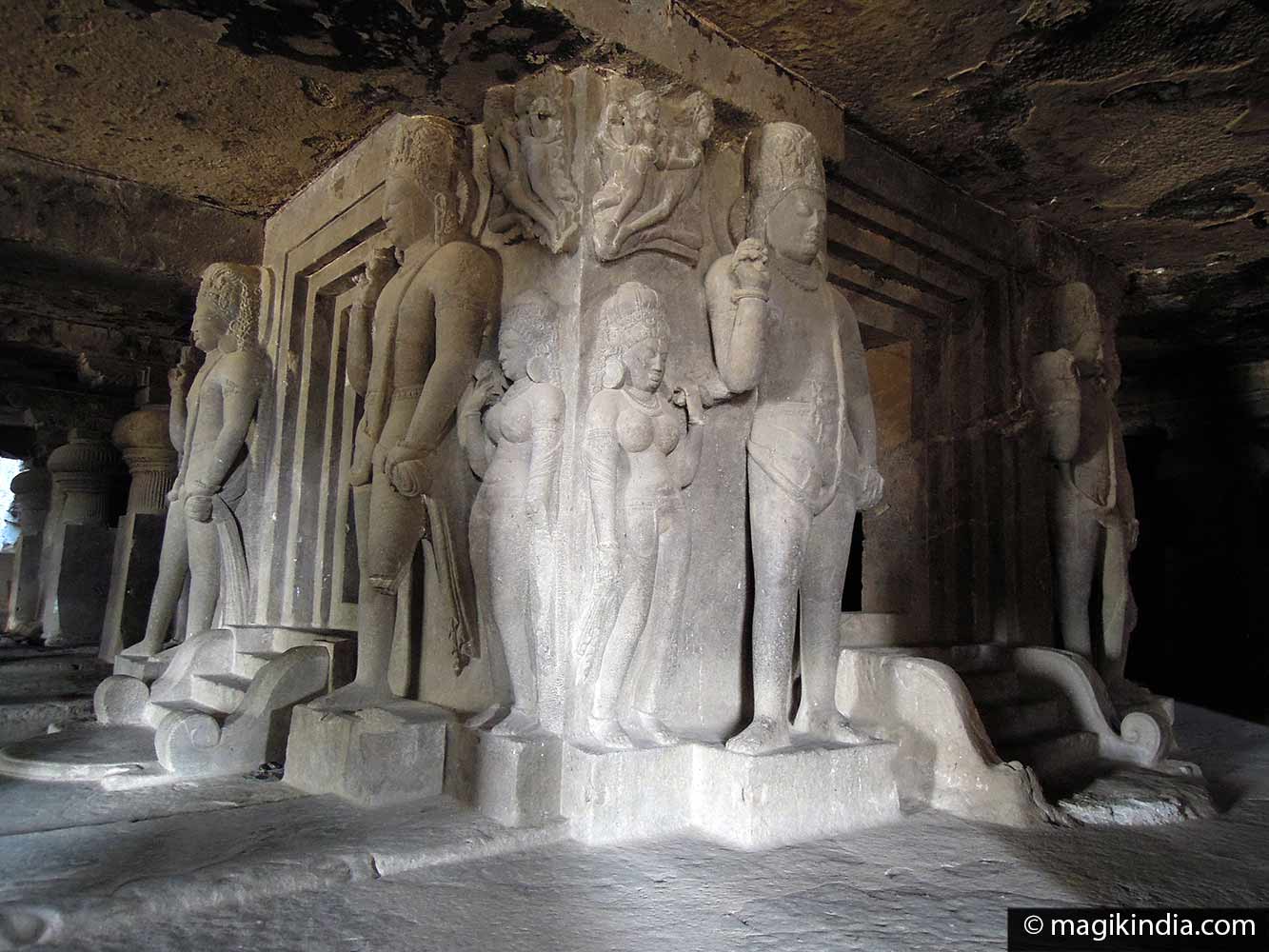
The Cave 29, the Dumar Lena, is often compared to that of Shiva on Elephanta Island, but this one is larger and much more refined. It is also called ‘Sita-ka-nahani’ because the statue of Yamuna has been confused with that of Sita.
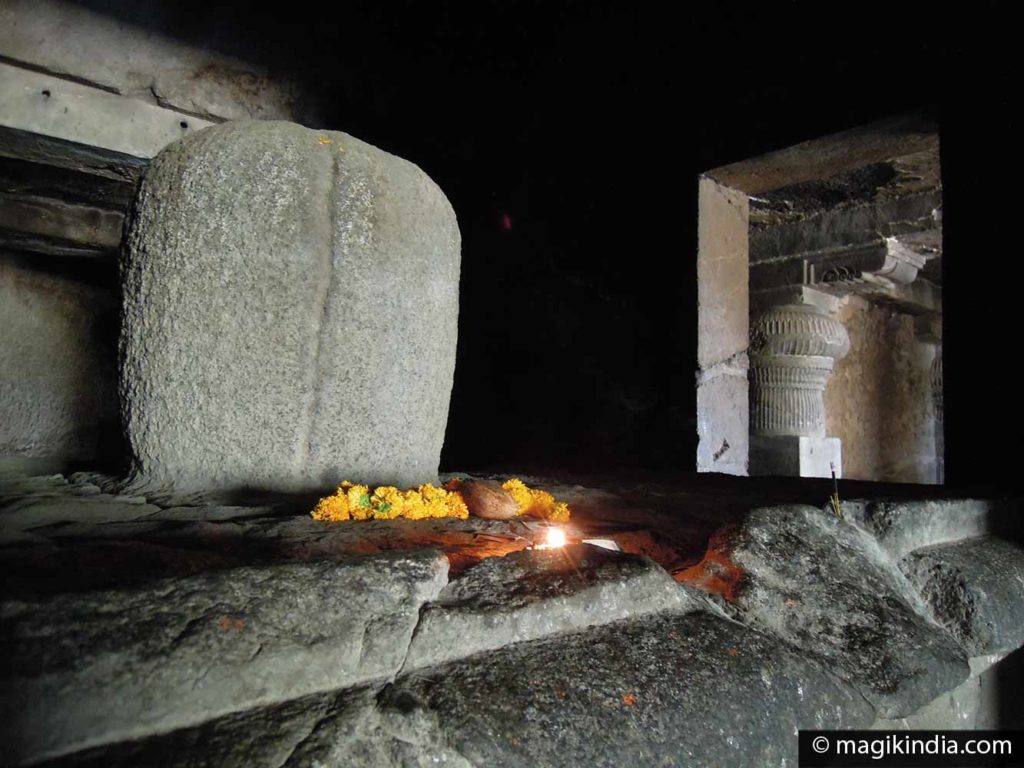
The Dumar Lena consists of an isolated sanctuary located in a group of rooms arranged on a cruciform plane. The altar, open on three sides, houses a lingam flanked by immense Dwarapalas, the guardian deities of the temple gates.
The walls of the cave are decorated with six large sculptural panels representing various episodes from the life of Lord Shiva: the celestial marriage of Shiva and Parvati, Shiva defeating the demon Andhaka, Shiva and Parvati playing Chaupar, Ravana making Mount Kailash tremble, Nataraja (the cosmic dancer) and Lakulisa, a 2th century ascetic, considered the last of the 28 avatars of Shiva and the creator of yoga.
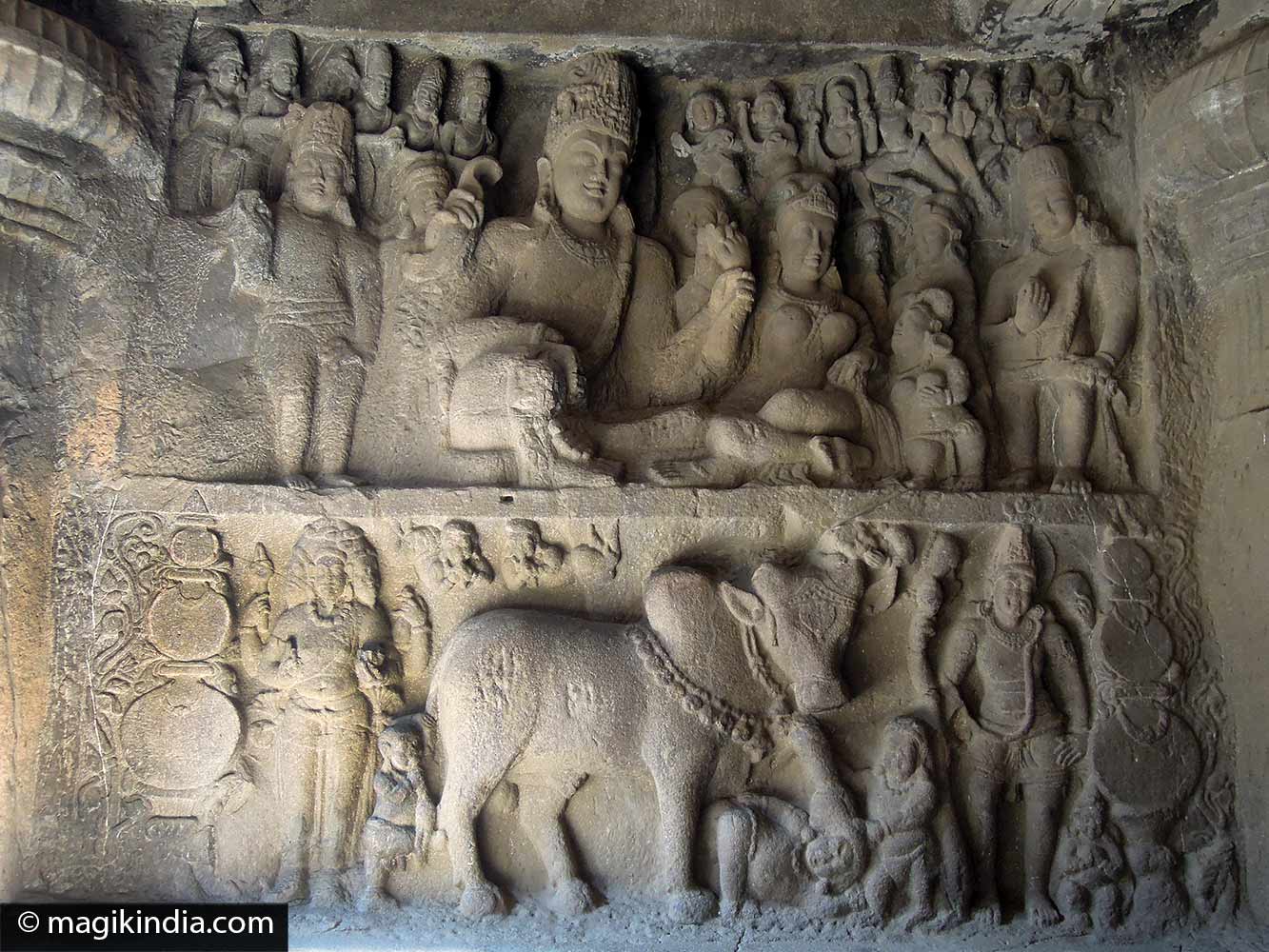
Jain caves (30-34)
At the north end of Ellora, there are five Jain caves belonging to the Digambara sect (the naked saints), which were carved in the 9th and early 10th century. These caves are smaller than the Buddhist and Hindu caves, but nevertheless present very refined and detailed sculptures as it is the case with most of Jain temples.
Cave 32, Indra Sabha
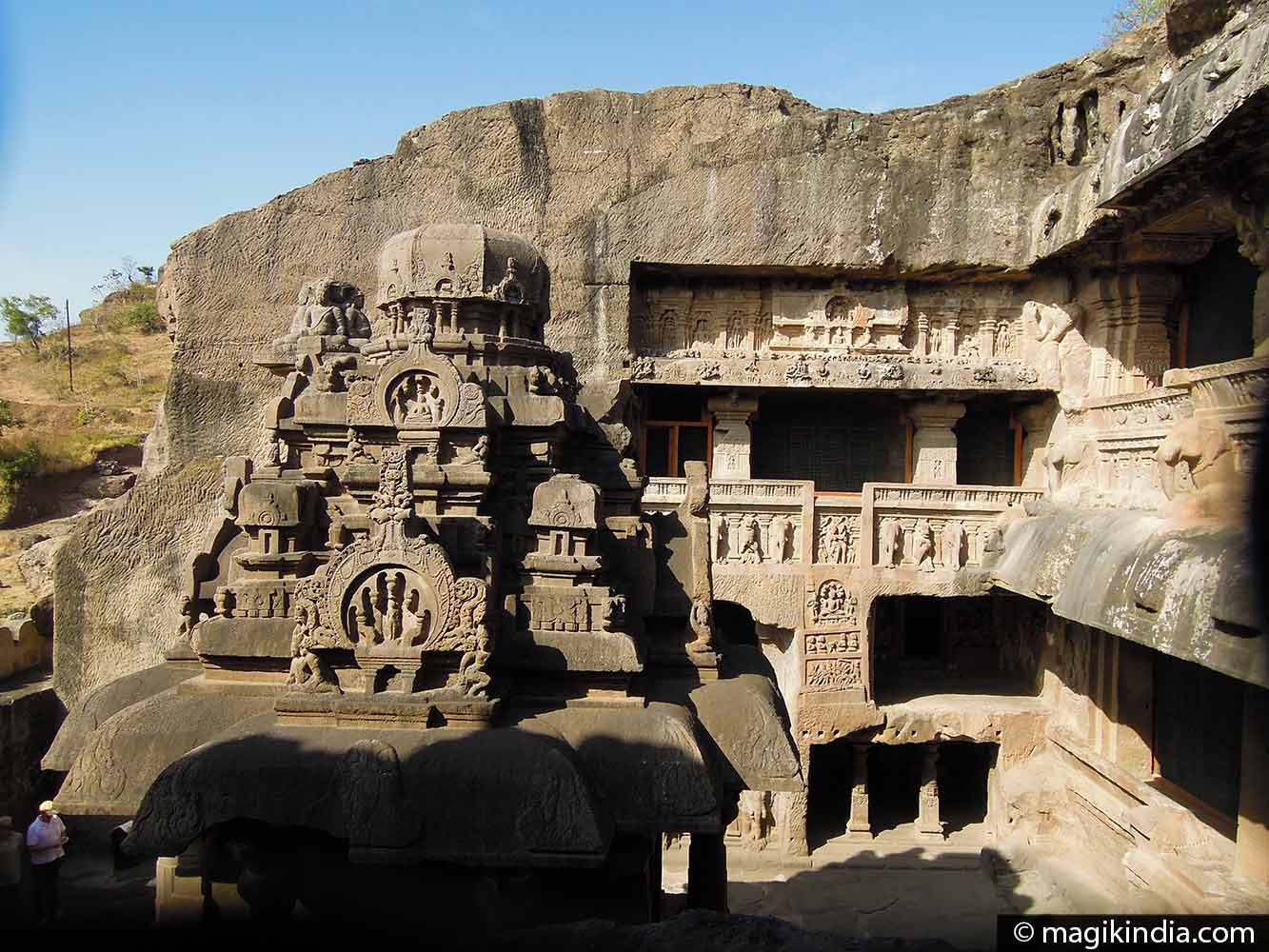
The Cave 32 is also called Indra Sabha, because the statue of Matanga has been confused with that of Indra, the king of Svarga (Heaven). It is also nicknamed ‘Chotta Kailasha’ (little Kailasha), because it looks similar to the great temple of cave 16 (see above). This is the most remarkable Jain cave in the group. This sanctuary was probably built in the 10th-11th century.
The front door opens onto a courtyard with a monolithic elephant and a large pillar with four images of deities representing the Jain faith being dispersed in the four directions.
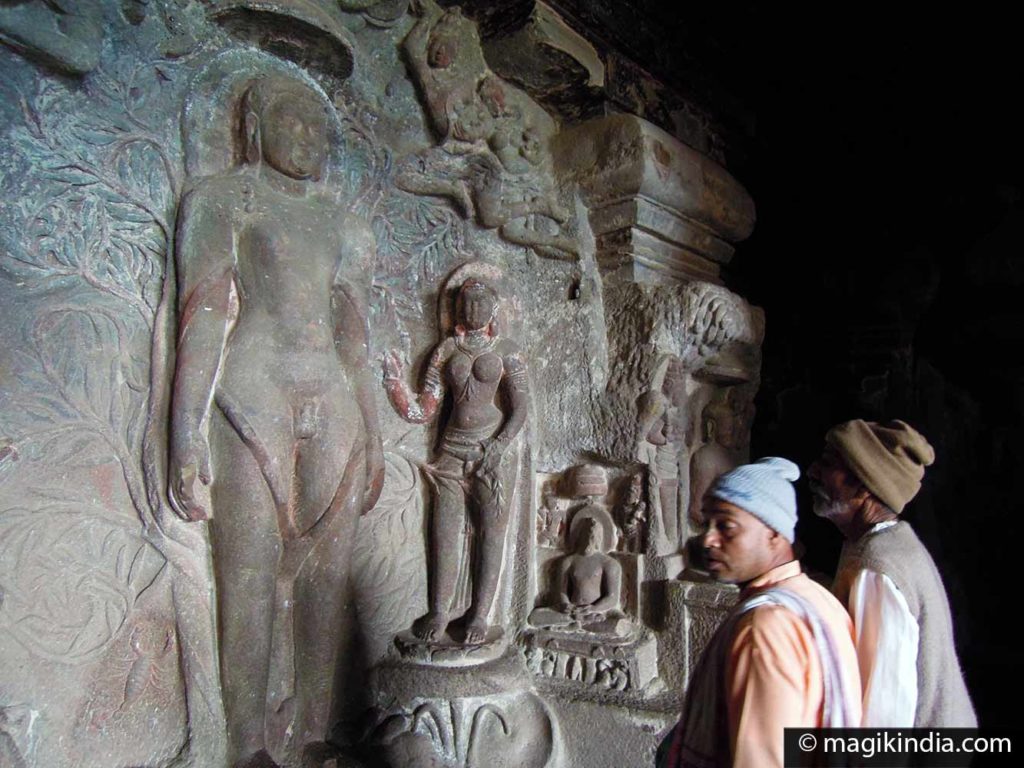
The main temple has two storeys, the upper floor as the ground floor is dedicated to Mahavira and contains beautiful panels of Matanga, the god of prosperity (the equivalent of Kubera in Hinduism) and Ambika or Sasana Devi, a Yaksi or protective goddess. The entire hall is painted and the pillars are finely carved.
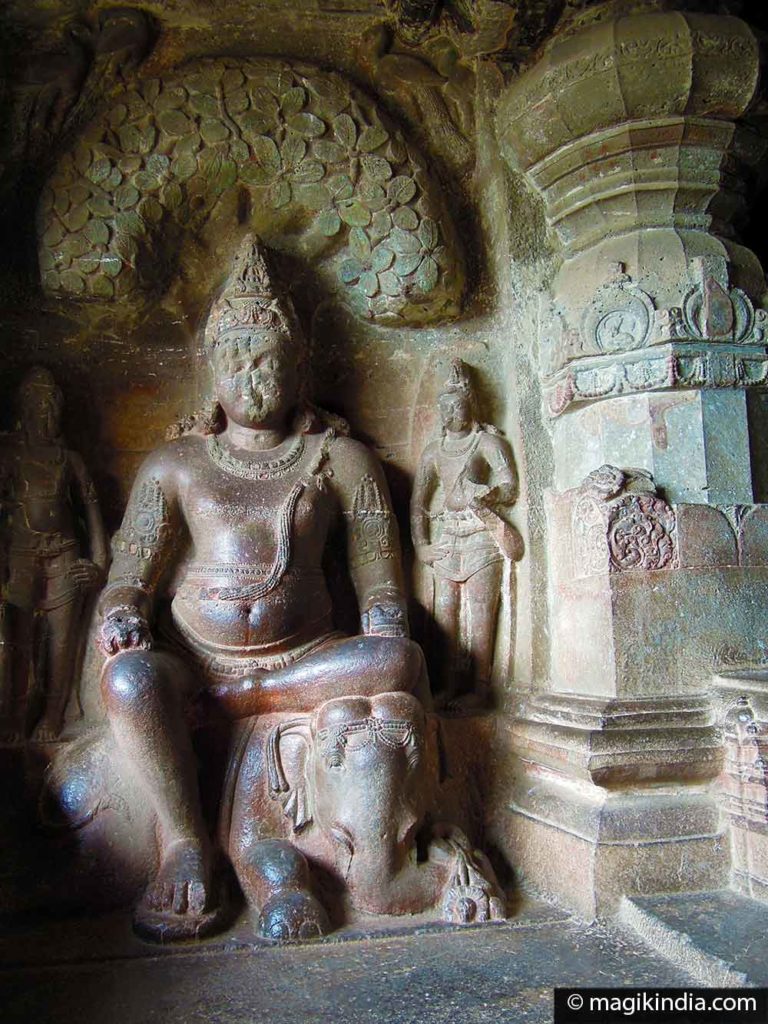
Cave 33, Jagannatha Sabha
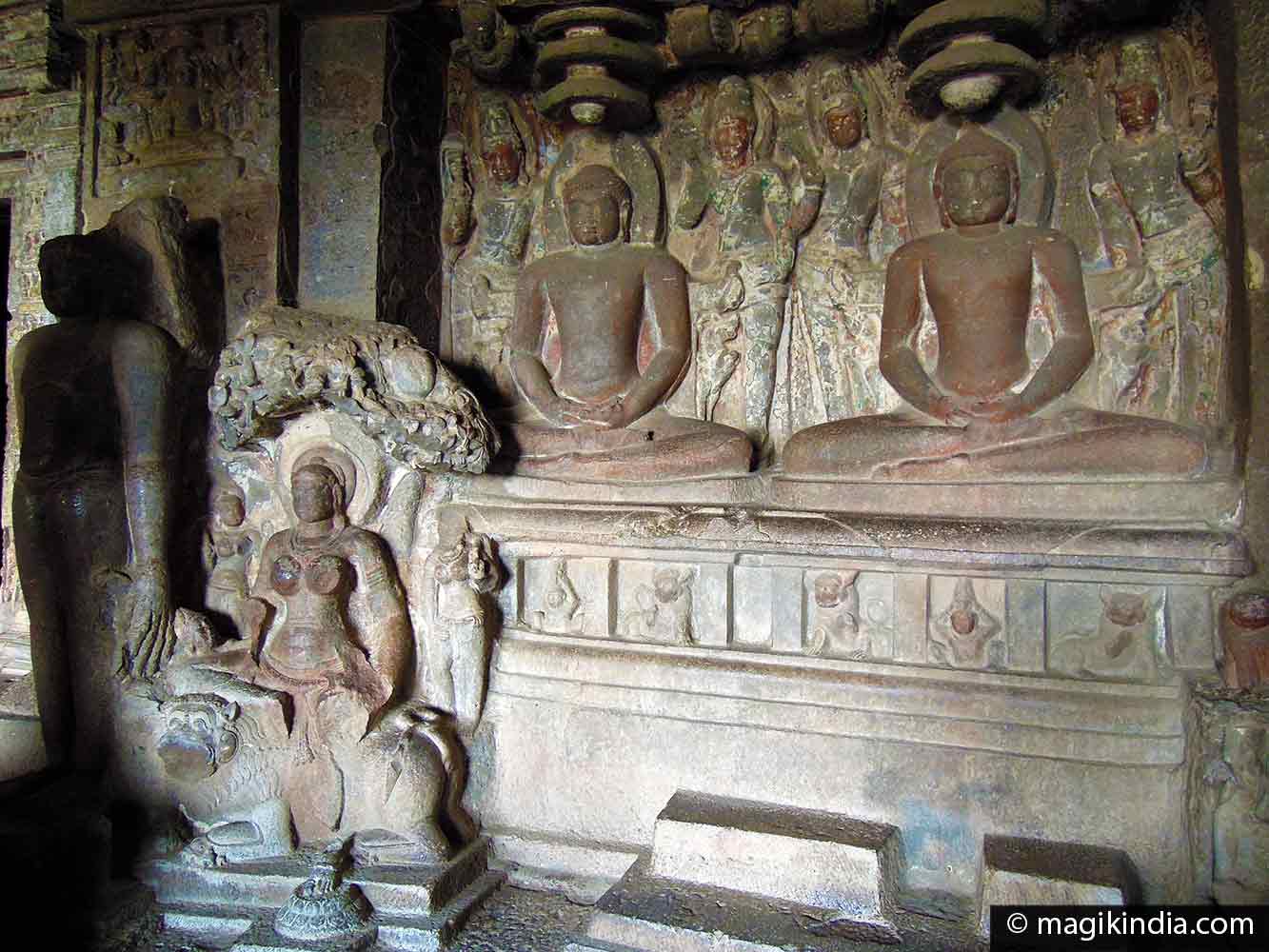
The Jagannatha Sabha (cave 33) is the second largest Jain cave in Ellora and dates from the 9th century according to the inscriptions on the pillars. It is a two-story cave with twelve massive pillars all meticulously carved. Inside, the main idols are Parshvanatha and Mahavira, the last two Tirthankaras (saints) of Jainism.

Cave 34
The last Jain cave is also dedicated to Mahavira. It contains beautiful panels like that of Parshvanatha (the twenty-third Tirthankara) standing like Gomateshwara Bahuli accompanied by sculptures of musicians playing a variety of instruments such as horns, drums, conch shells, trumpets and cymbals.
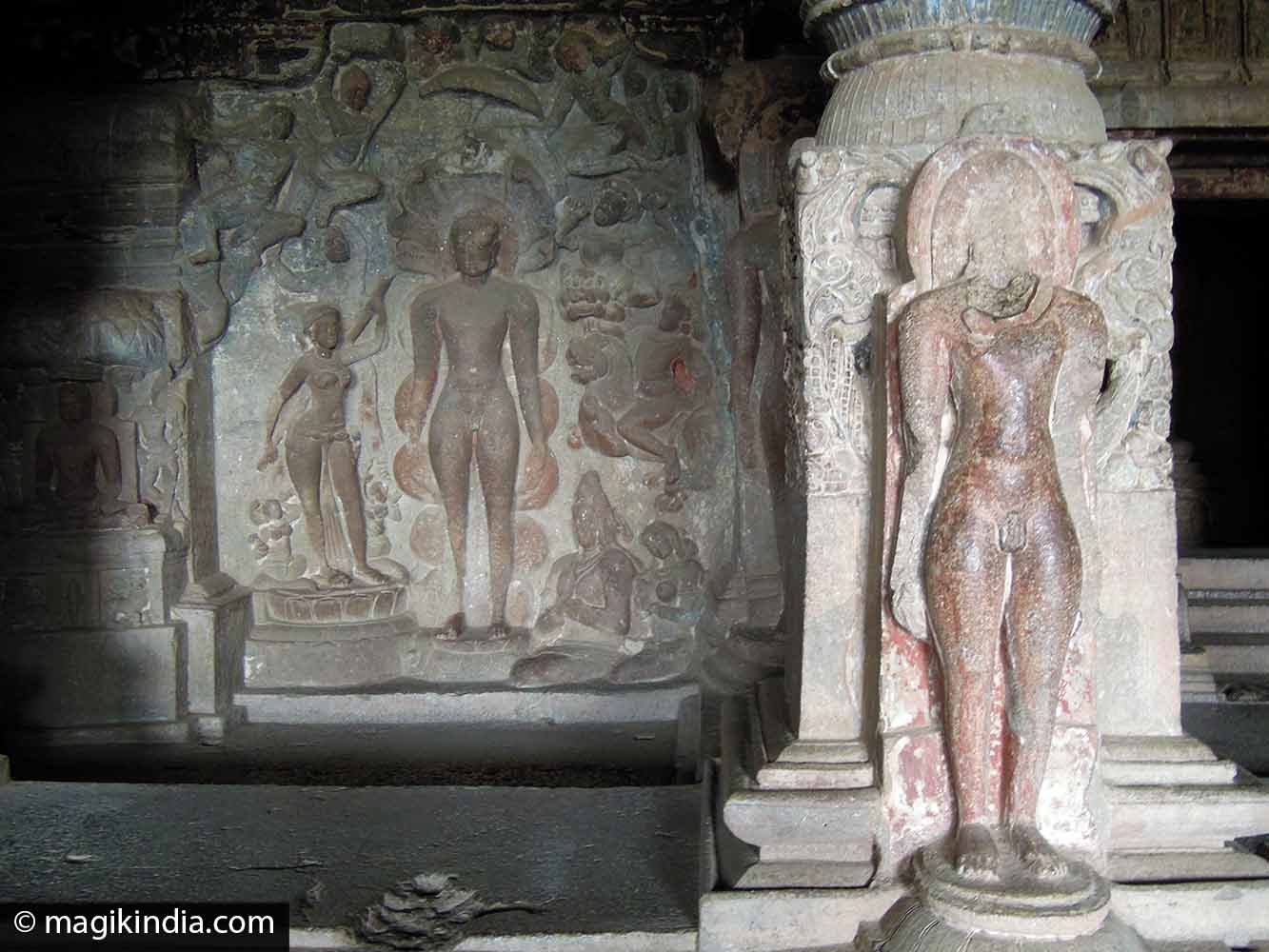

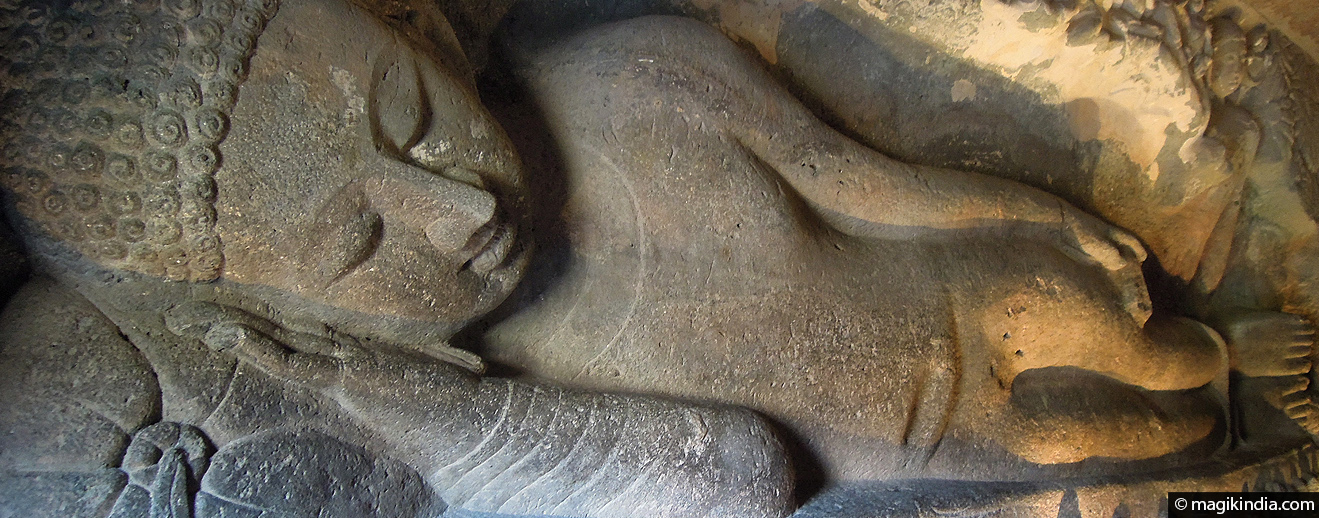
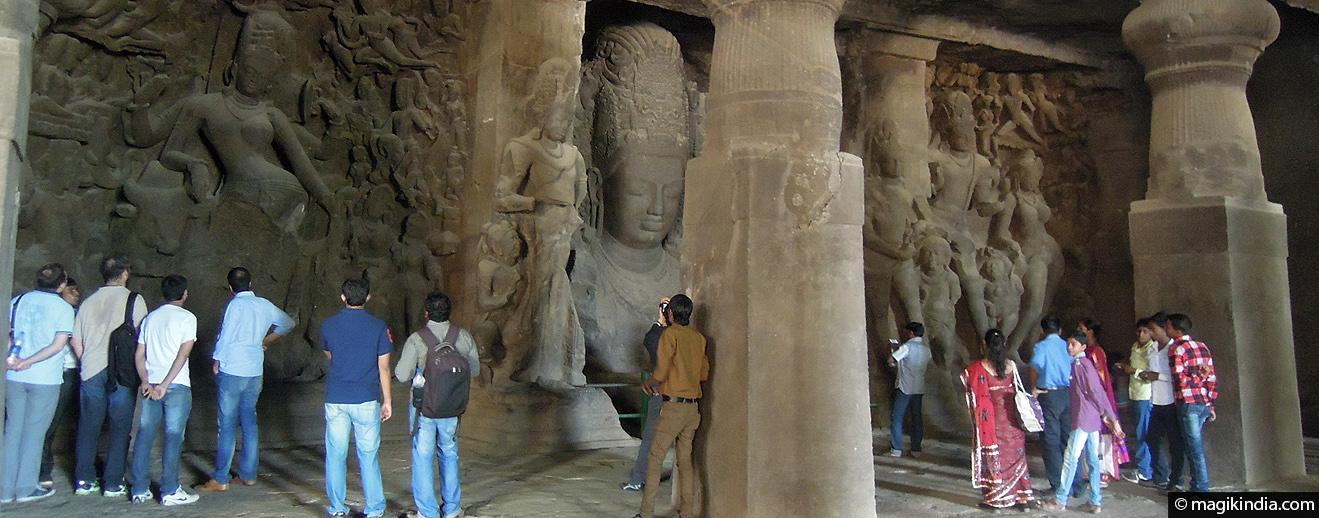
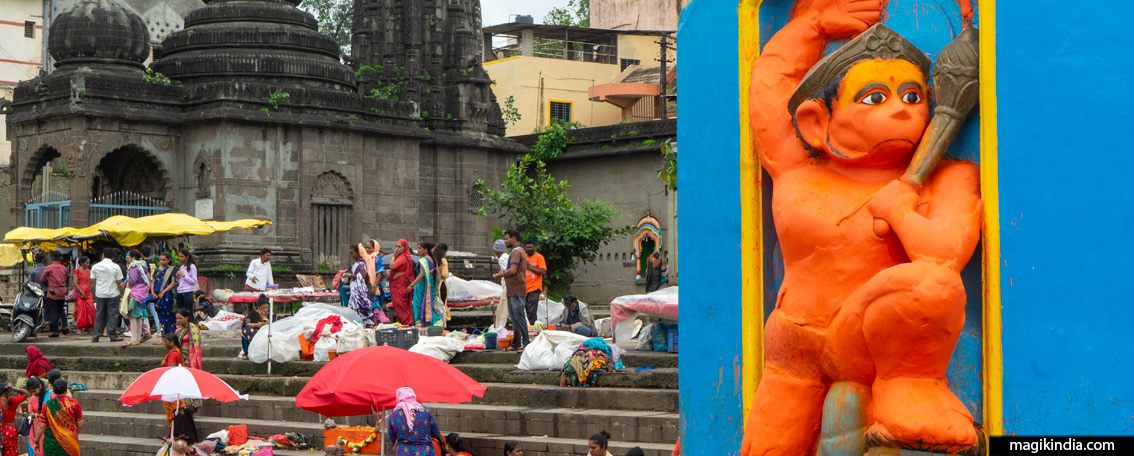
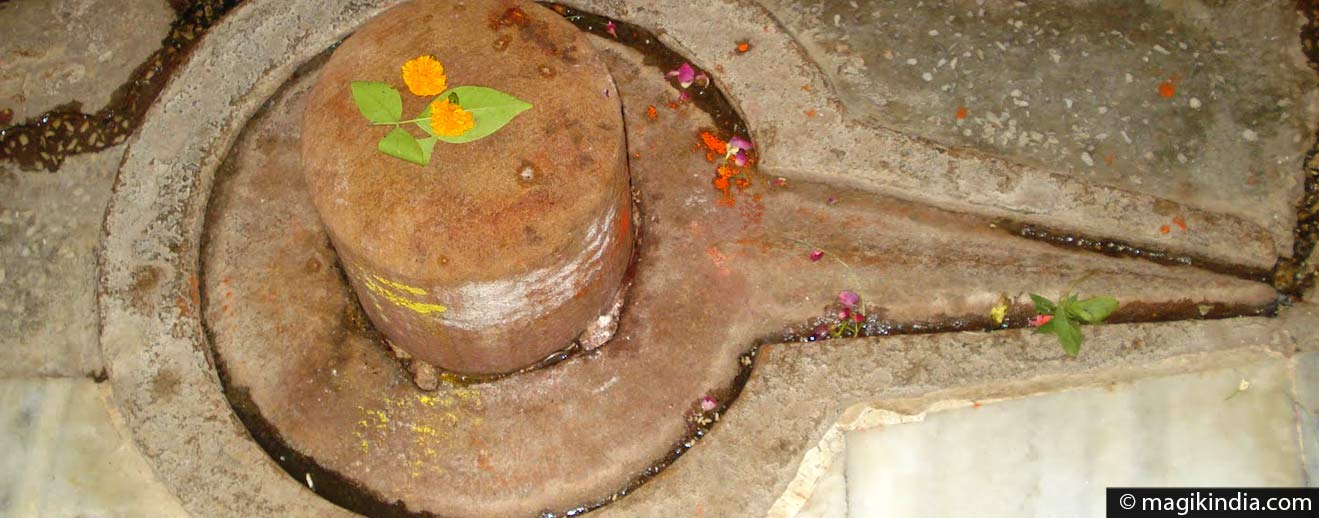

Amazing information you shared with this blog before this I really don’t know about some caves
Thanks Shivani 🙂 Best regard, Mathini
best place to get a piece of Indian architecture history
yes indeed 🙂
I’m going soon! thanks for this article 🙂
Thanks Ajay 🙂